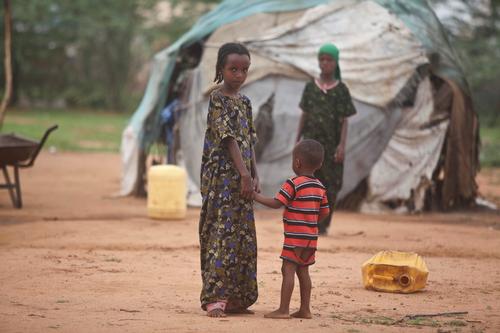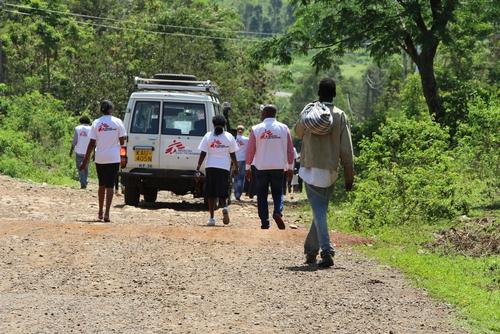Introduction
For many of the thousands of refugees living in Dadaab, northeastern Kenya, the passage from one humanitarian crisis to the next is nothing new. The vast majority fled conflict in Somalia and arrived to a ‘home’ that offers fear, insecurity and overcrowded living conditions as part of the daily reality. Many others have been born there, and know nothing but life in a refugee camp.
Composed of five camps - Dagahaley, Hagadera, Ifo, Kambios and Ifo 2 - and with a population of 403,727 refugees, Dadaab is the largest refugee camp complex in the world. Three quarters of its population are children under 12, women and the elderly.1 Over Dadaab’s twenty years of existence, the population has continued to struggle to survive, and live amidst the effects of a protracted emergency with no clear end in sight.
The reasons why most Somalis fled their home country – namely danger and insecurity – are as pertinent today as they ever were, and preclude most refugees from even considering returning to Somalia, today or at any time soon.
The recent Tripartite Agreement between the Kenyan and Somali governments and the UNHCR2 signed in Nairobi on 10 November 2013, outlines the practical and legal procedures for the voluntary return of the hundreds of thousands of refugees from Kenya to Somalia.
However, while the discussion on reintegrating the refugees back into Somalia could be considered as a positive step, it should not happen at the expense of providing adequate aid and protection to Somali refugees who are currently living in Kenya. Registration facilities in Dadaab have been closed since October 2011; as a consequence, newly arrived refugees receive insufficient aid. Recent funding cuts by the World Food Programme have brought about a reduction in food rations. Security conditions in the camps are such that refugees are often at risk of violence, and the aid organisations that assist them are often forced to operate with a skeleton staff. Médecins Sans Frontières (MSF), for example, has been unable to maintain a permanent presence of international staff since July 2012.
Reintegrating refugees back into Somalia could be part of a real and sustainable solution for Somali refugees; nevertheless, maintaining assistance to the refugees needs to be high on the agenda of all stakeholders. Security and dignity must be ensured for both refugees living in Kenya and those returning to Somalia.
The Somali government and its partners must guarantee that returnees have rights and receive assistance, while aid must continue to be provided in Kenya’s refugee camps to those who do not wish to return.
As part of a continuous process of evaluating the needs and concerns of the refugee community, a team of 21 interviewers from MSF carried out a series of interviews with refugees at the organisation’s health facilities in Dagahaley camp. A total of 1,009 interviews were carried out between 1 and 14 August 2013.
While the results of this assessment cannot be extrapolated to the entire refugee population of Dadaab, the findings – taken alongside MSF’s continual discussions with the refugee community, the observations of MSF teams on the ground, and the medical data from MSF’s activities – provide an insight into the general situation of the refugees today in Dagahaley camp.





